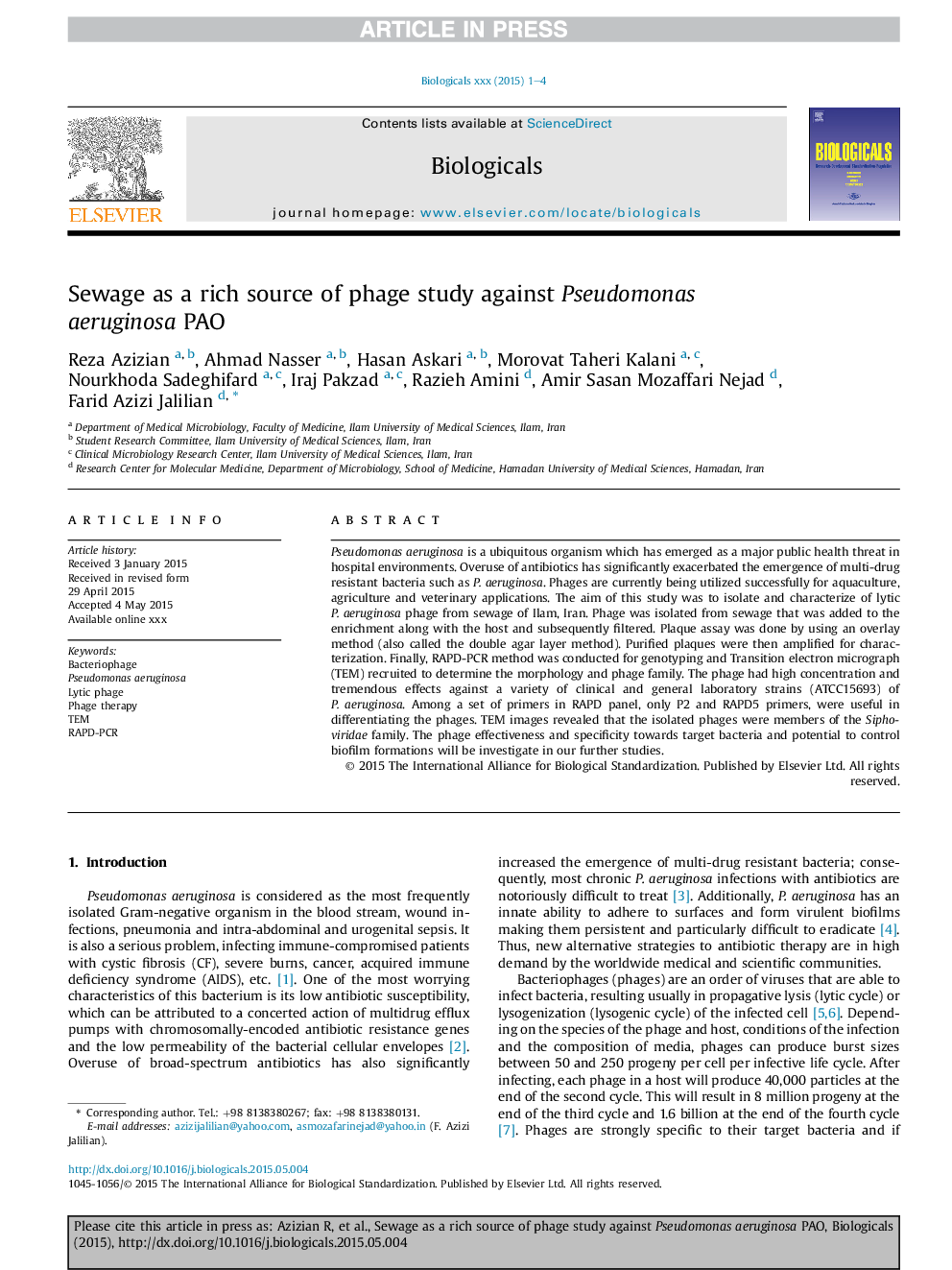| Article ID | Journal | Published Year | Pages | File Type |
|---|---|---|---|---|
| 10852547 | Biologicals | 2015 | 4 Pages |
Abstract
Pseudomonas aeruginosa is a ubiquitous organism which has emerged as a major public health threat in hospital environments. Overuse of antibiotics has significantly exacerbated the emergence of multi-drug resistant bacteria such as P. aeruginosa. Phages are currently being utilized successfully for aquaculture, agriculture and veterinary applications. The aim of this study was to isolate and characterize of lytic P. aeruginosa phage from sewage of Ilam, Iran. Phage was isolated from sewage that was added to the enrichment along with the host and subsequently filtered. Plaque assay was done by using an overlay method (also called the double agar layer method). Purified plaques were then amplified for characterization. Finally, RAPD-PCR method was conducted for genotyping and Transition electron micrograph (TEM) recruited to determine the morphology and phage family. The phage had high concentration and tremendous effects against a variety of clinical and general laboratory strains (ATCC15693) of P. aeruginosa. Among a set of primers in RAPD panel, only P2 and RAPD5 primers, were useful in differentiating the phages. TEM images revealed that the isolated phages were members of the Siphoviridae family. The phage effectiveness and specificity towards target bacteria and potential to control biofilm formations will be investigate in our further studies.
Related Topics
Life Sciences
Biochemistry, Genetics and Molecular Biology
Biochemistry, Genetics and Molecular Biology (General)
Authors
Reza Azizian, Ahmad Nasser, Hasan Askari, Morovat Taheri Kalani, Nourkhoda Sadeghifard, Iraj Pakzad, Razieh Amini, Amir Sasan Mozaffari Nejad, Farid Azizi Jalilian,
